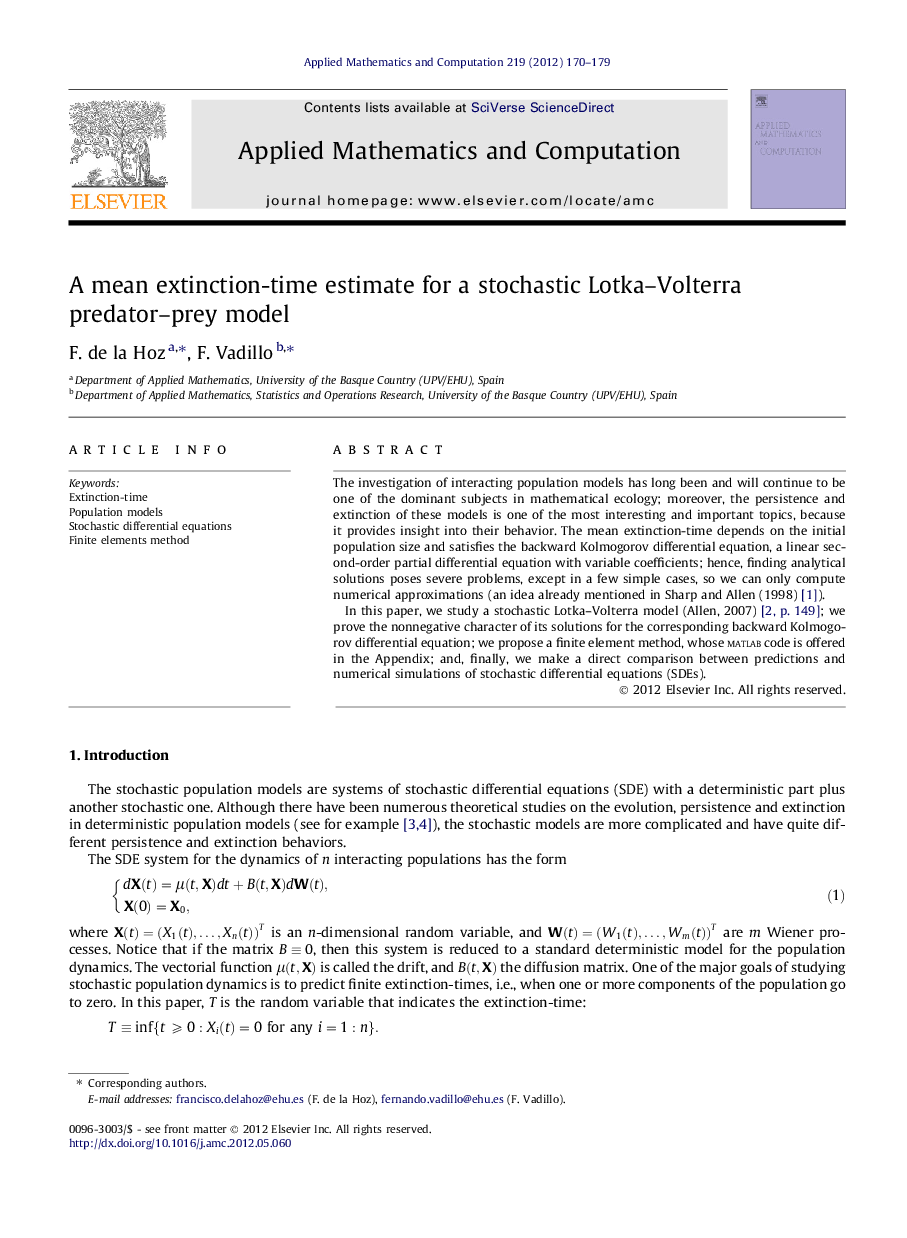| Article ID | Journal | Published Year | Pages | File Type |
|---|---|---|---|---|
| 6422015 | Applied Mathematics and Computation | 2012 | 10 Pages |
The investigation of interacting population models has long been and will continue to be one of the dominant subjects in mathematical ecology; moreover, the persistence and extinction of these models is one of the most interesting and important topics, because it provides insight into their behavior. The mean extinction-time depends on the initial population size and satisfies the backward Kolmogorov differential equation, a linear second-order partial differential equation with variable coefficients; hence, finding analytical solutions poses severe problems, except in a few simple cases, so we can only compute numerical approximations (an idea already mentioned in Sharp and Allen (1998) [1]).In this paper, we study a stochastic Lotka-Volterra model (Allen, 2007) [2, p. 149]; we prove the nonnegative character of its solutions for the corresponding backward Kolmogorov differential equation; we propose a finite element method, whose Matlab code is offered in the Appendix; and, finally, we make a direct comparison between predictions and numerical simulations of stochastic differential equations (SDEs).
